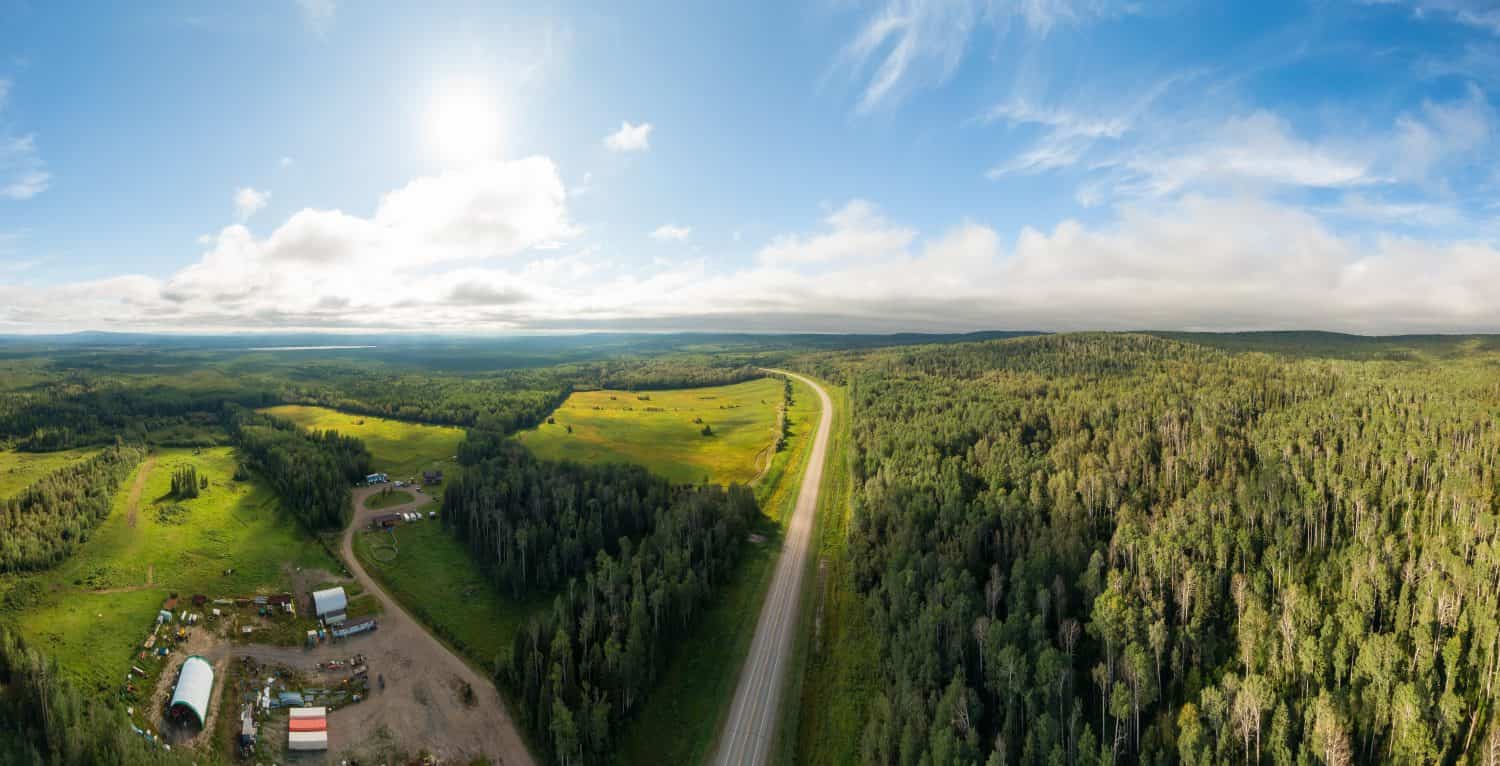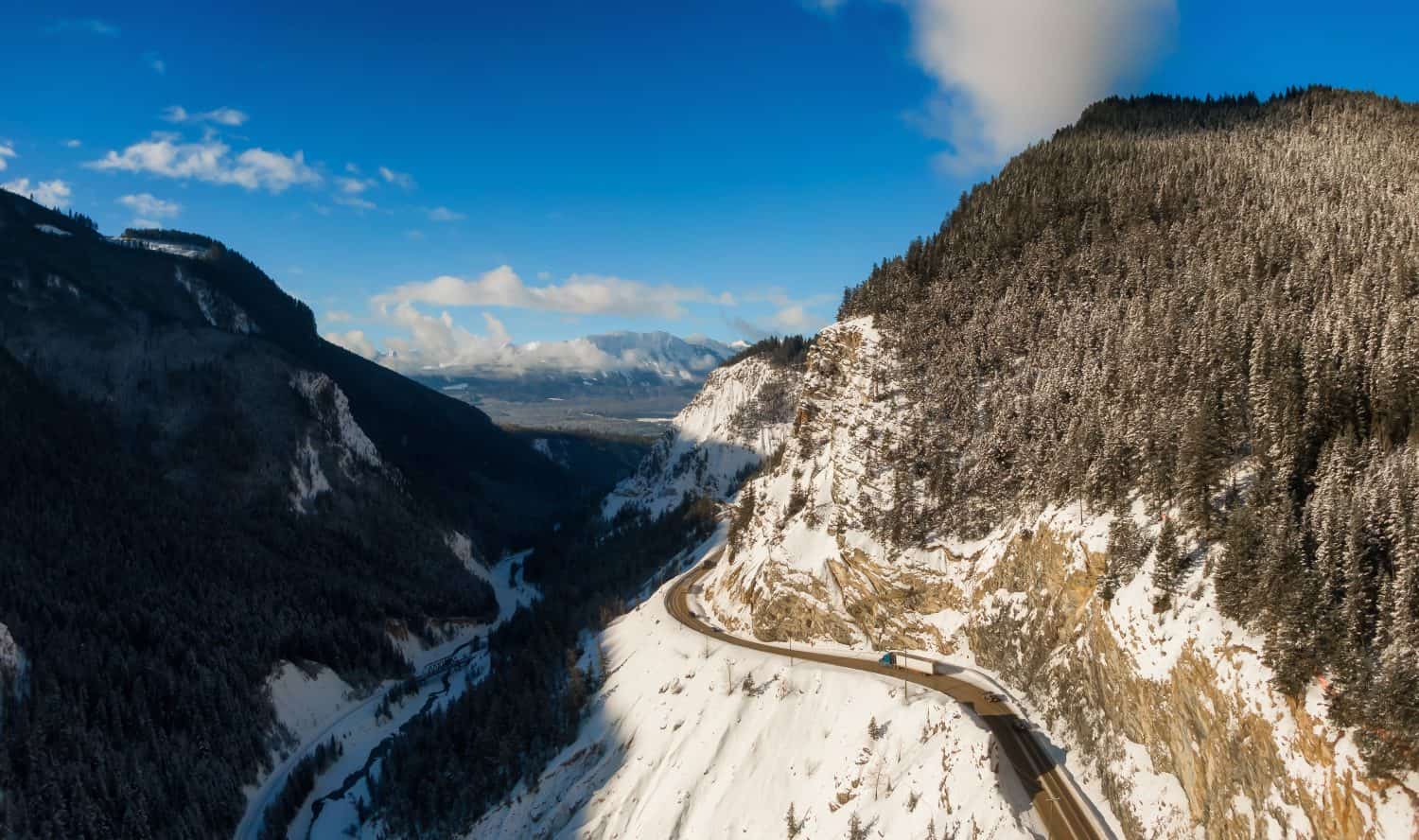Even in an area that experiences cold weather regularly during the winter months, some spots get especially frigid. Fort Nelson in British Columbia set new records in December 2022. It reached a staggeringly low temperature of -43.6 degrees Fahrenheit. The previous record was set in 1984. That year, the low reached -39.5 degrees Fahrenheit. Other areas within British Columbia also had their cold records broken.
So why did it get so cold across British Columbia in December 2022? According to reports from experts at the time, it was just some really cold air that came through the province that caused the low temps. While many records broke during that time, areas in the eastern part of the province, such as Fort Nelson, experienced the coldest drops. Generally, coastal parts of British Columbia experience milder climates overall, including warmer winters and cooler summers. But in the mountainous parts of British Columbia further from the coast, the winters can get much colder.
Where Is Fort Nelson, British Columbia?

The famous Alaska Highway runs near present-day Fort Nelson in British Columbia.
©EB Adventure Photography/Shutterstock.com
Fort Nelson is in the northeast corner of British Columbia. It is part of the Northern Rockies Regional Municipality (NRRM) and is east of the Northern Rockies. It is 1,345 feet above sea level, which is not as high as some other spots in this mountain range.
This small town was originally a fur trading post, which was established in the early 1800s. It later served as an airbase during World War II and was the start of the Alaska Highway, which was built by the U.S. Army in the 1940s. After World War II, the highway was opened for public use and is still used today. But it wasn’t until the 1950s that Fort Nelson developed beyond its military purpose. With the discovery of oil in this region, the area expanded. Other energy sources also contributed to the population growth.
However, the population and economy both decreased over the last 50 years. As businesses shut their doors, it became harder for Fort Nelson to support with infrastructure and services. Fort Nelson joined with the Northern Rockies Regional District to become the NRRM. Today, the population is around 3,000 people.
Does It Get Cold in British Columbia?

Snow is more common inland in British Columbia, such as this road near the town of Golden.
©EB Adventure Photography/Shutterstock.com
In general, British Columbia is a colder area of North America. It is located just above the Canada-United States border on the Pacific Coast. However, as you get closer to the coast, the temperature is more temperate. Even in the winter, the average temperature in Vancouver, the largest city in the province, is around 45 degrees Fahrenheit. Summers are also mild, with average temperatures around 70 degrees Fahrenheit.
The temperature in northern British Columbia, where Fort Nelson is located, can be much colder than in the more populated southern part of the province. The Yukon and Northwest Territories are directly north of British Columbia. These parts of North America experience some of the coldest weather in the entire continent. It is not unusual for winter temps to fall to negative numbers, even as low as -58 degrees Fahrenheit. The northern part of British Columbia is much closer to this climate than it is to that of the temperate south.
Animals in British Columbia

Black bears live in many parts of British Columbia but are most plentiful in rural locations further away from major cities and populated areas.
©Jukka Jantunen/Shutterstock.com
With plenty of wilderness, British Columbia and Canada are home to many interesting animal species. There are large predators as well as smaller animals in the area. Some of the largest animals are bears, bison, moose, and caribou. Bighorn sheep and mountain goats are also common in the rocky terrain of the mountainous parts of British Columbia.
Due to its location on the coast, you can also spot plenty of marine life in this province along the Pacific. Orcas, sea otters, porpoises, sea lions, and harbor seals all live in this area. Many of the most popular tourist attractions involve getting up close to nature, including some of these animals. You can enjoy a whale-watching tour to get out on the water from Vancouver.
In the skies, bald eagles, hawks, and other birds of prey dominate. But smaller songbirds and migratory birds like geese are also plentiful during certain times of the year. The national bird of Canada is the gray jay or Canadian jay. It lives throughout British Columbia and especially likes locations with higher elevation, including in the northern and inland parts of the province. So you’re likely to see a gray jay if you visit Fort Nelson, although they do a great job of blending into the environment. Overall, British Columbia is a fantastic place to see wildlife.
The photo featured at the top of this post is © Christiannafzger/ via Getty Images
Thank you for reading! Have some feedback for us? Contact the AZ Animals editorial team.







